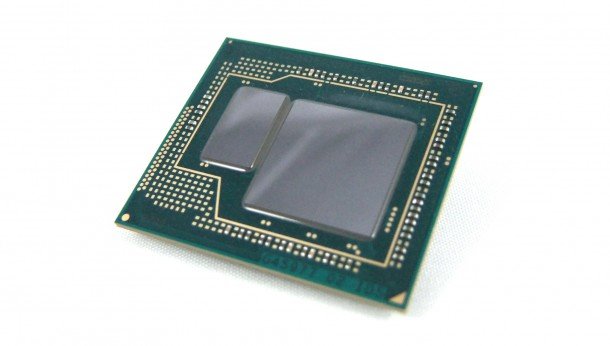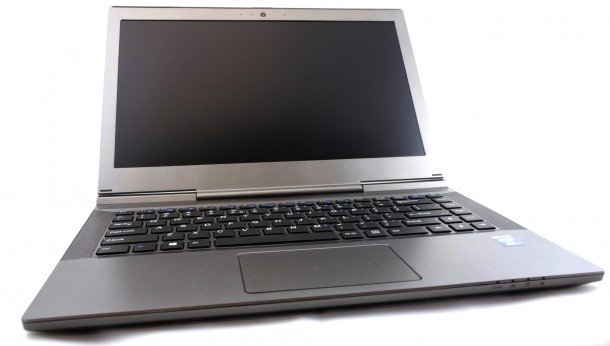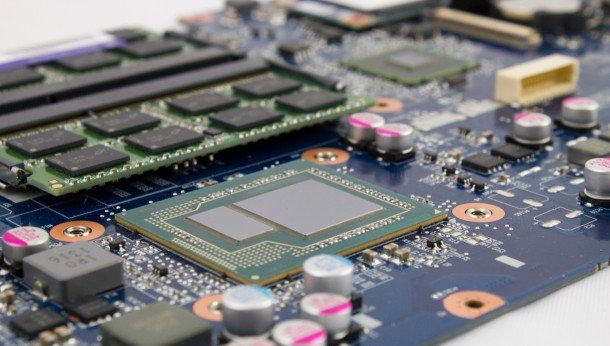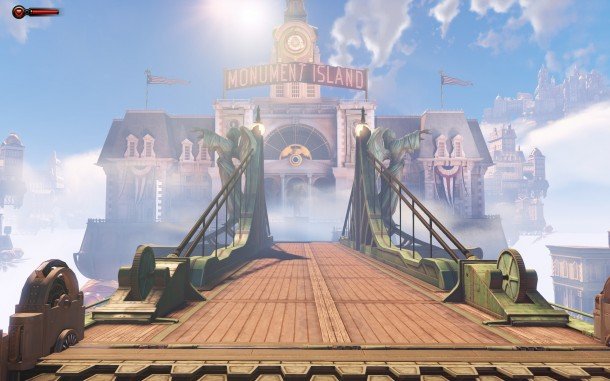Intel's Iris Pro integrated graphics tech hands-on: solid gaming performance on the go

Integrated GPUs, processor GPUs, call them what you will, generally those relatively weak graphics components are ignored by PC gamers concerned with high performance, but in the world of laptops, that could be about to change. Last week saw me briefly ensconced inside Intel UK's Swindon HQ, with a couple of Iris Pro-based laptops for company. They represent the top of Intel's processor graphics tree and deliver practically current-gen console performance in an Ultrabook-esque form factor.
Inside the surprisingly svelte new Clevo chassis lies the 4th Gen Core i7-4750HQ, running at 2GHz, with the ability to hit 3.2GHz on power-hungry Turbo mode. The important thing though is that this chip is housing the new Iris Pro Intel graphics, so that's the full 40 execution unit set-up with an added 128MB eDRAM.

By comparison, the standard Iris parts also come with the same 40 EUs, but lack that extra eDRAM cache. Both iterations look a lot healthier than the standard HD 4600 Haswell tech, with their 20 execution units.
I had time to throw some of my usual gaming benchmarks at the graphics silicon and to be honest the numbers were initially a little underwhelming compared with some of the gaming laptops I've tested recently, until I remembered there's no actual dedicated graphics hardware in there aside from what's in that Haswell CPU. I'm used to running my tests at top whack to really push the hardware to its limits. When you're locked into a serious benchmark collecting frenzy on, say a new Nvidia mobile chip, the temptation is to push it as far as you can go, but that simply isn't what Intel's Iris Pro is all about.

At the highest settings, with 4x anti-aliasing on its quite lovely 1080p IPS screen, I struggled to get games running in double figures. But this is a machine without discrete graphics - any other laptop trying these tests on processor graphics would curl up in a clam-shape and weep silicon tears. On this full-HD, 14-inch screen, with it's teeny-tiny pixels, you barely need anti-aliasing, so that can be the first to go. Drop some of the other intensive settings down a touch - you know, go from 'ultra' to simply 'high' - and suddenly you've got a little laptop that can deliver a genuinely pleasing gaming experience on the go.
I happily ran Bioshock Infinite at 38fps, and it looked great. If this new integrated tech lets me do some serious gaming on such a little laptop, I can definitely get behind that.

Sure, if you absolutely have to run your games with everything turned on and anti-aliased up the wazoo, then you're going to have to drop around £1,500 on a big, clunky gaming laptop. Remember though, you'll have to keep it plugged into the mains whenever you want to game and really, wouldn't you have been better off spending less on a faster desktop in that case?
The biggest gaming news, reviews and hardware deals
Keep up to date with the most important stories and the best deals, as picked by the PC Gamer team.
If you want something small and light, with a battery that lasts longer than an icicle in Abu Dhabi - which will still give you a decent gaming experience - then Intel's Iris Pro is a rather tantalising prospect.

Dave has been gaming since the days of Zaxxon and Lady Bug on the Colecovision, and code books for the Commodore Vic 20 (Death Race 2000!). He built his first gaming PC at the tender age of 16, and finally finished bug-fixing the Cyrix-based system around a year later. When he dropped it out of the window. He first started writing for Official PlayStation Magazine and Xbox World many decades ago, then moved onto PC Format full-time, then PC Gamer, TechRadar, and T3 among others. Now he's back, writing about the nightmarish graphics card market, CPUs with more cores than sense, gaming laptops hotter than the sun, and SSDs more capacious than a Cybertruck.

